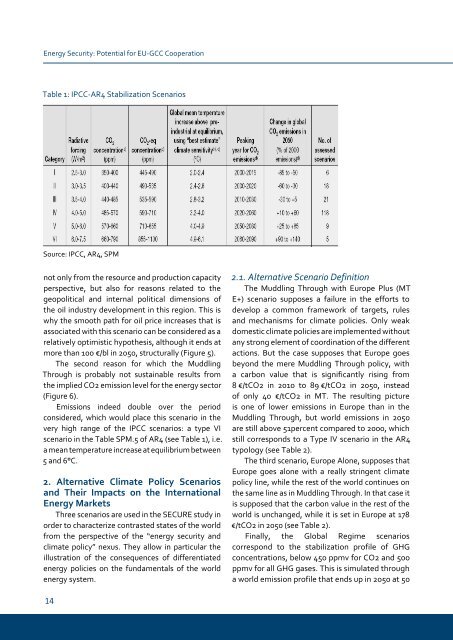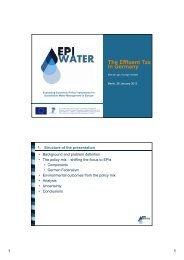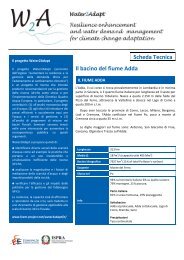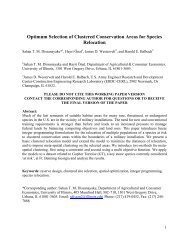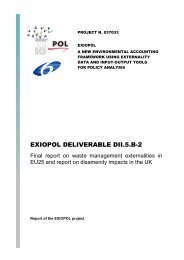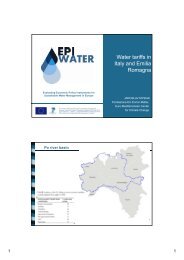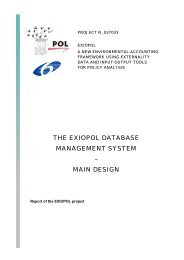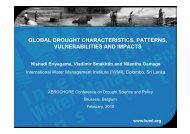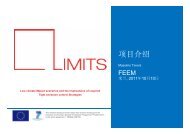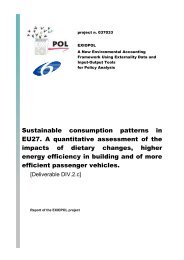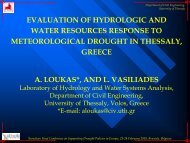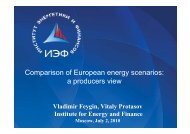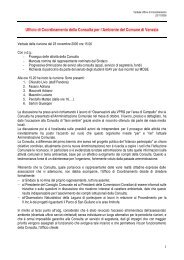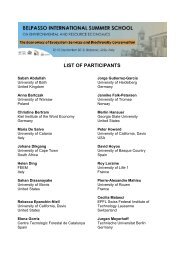Gulf and European Energy Supply Security - Feem-project.net
Gulf and European Energy Supply Security - Feem-project.net
Gulf and European Energy Supply Security - Feem-project.net
Create successful ePaper yourself
Turn your PDF publications into a flip-book with our unique Google optimized e-Paper software.
<strong>Energy</strong> <strong>Security</strong>: Potential for EU-GCC Cooperation<br />
Table 1: IPCC-AR4 Stabilization Scenarios<br />
Source: IPCC, AR4, SPM<br />
not only from the resource <strong>and</strong> production capacity<br />
perspective, but also for reasons related to the<br />
geopolitical <strong>and</strong> internal political dimensions of<br />
the oil industry development in this region. This is<br />
why the smooth path for oil price increases that is<br />
associated with this scenario can be considered as a<br />
relatively optimistic hypothesis, although it ends at<br />
more than 100 €/bl in 2050, structurally (Figure 5).<br />
The second reason for which the Muddling<br />
Through is probably not sustainable results from<br />
the implied CO2 emission level for the energy sector<br />
(Figure 6).<br />
Emissions indeed double over the period<br />
considered, which would place this scenario in the<br />
very high range of the IPCC scenarios: a type VI<br />
scenario in the Table SPM.5 of AR4 (see Table 1), i.e.<br />
a mean temperature increase at equilibrium between<br />
5 <strong>and</strong> 6°C.<br />
2. Alternative Climate Policy scenarios<br />
<strong>and</strong> their Impacts on the International<br />
energy Markets<br />
Three scenarios are used in the SECURE study in<br />
order to characterize contrasted states of the world<br />
from the perspective of the “energy security <strong>and</strong><br />
climate policy” nexus. They allow in particular the<br />
illustration of the consequences of differentiated<br />
energy policies on the fundamentals of the world<br />
energy system.<br />
14<br />
2.1. Alternative Scenario Definition<br />
The Muddling Through with Europe Plus (MT<br />
E+) scenario supposes a failure in the efforts to<br />
develop a common framework of targets, rules<br />
<strong>and</strong> mechanisms for climate policies. Only weak<br />
domestic climate policies are implemented without<br />
any strong element of coordination of the different<br />
actions. But the case supposes that Europe goes<br />
beyond the mere Muddling Through policy, with<br />
a carbon value that is significantly rising from<br />
8 €/tCO2 in 2010 to 89 €/tCO2 in 2050, instead<br />
of only 40 €/tCO2 in MT. The resulting picture<br />
is one of lower emissions in Europe than in the<br />
Muddling Through, but world emissions in 2050<br />
are still above 51percent compared to 2000, which<br />
still corresponds to a Type IV scenario in the AR4<br />
typology (see Table 2).<br />
The third scenario, Europe Alone, supposes that<br />
Europe goes alone with a really stringent climate<br />
policy line, while the rest of the world continues on<br />
the same line as in Muddling Through. In that case it<br />
is supposed that the carbon value in the rest of the<br />
world is unchanged, while it is set in Europe at 178<br />
€/tCO2 in 2050 (see Table 2).<br />
Finally, the Global Regime scenarios<br />
correspond to the stabilization profile of GHG<br />
concentrations, below 450 ppmv for CO2 <strong>and</strong> 500<br />
ppmv for all GHG gases. This is simulated through<br />
a world emission profile that ends up in 2050 at 50


